Which economies top the UN E-Government Development Index
April 20, 2023
Governments around the world are facing a multitude of challenges as they strive to deliver effective, efficient and equitable services to citizens in the digital age.
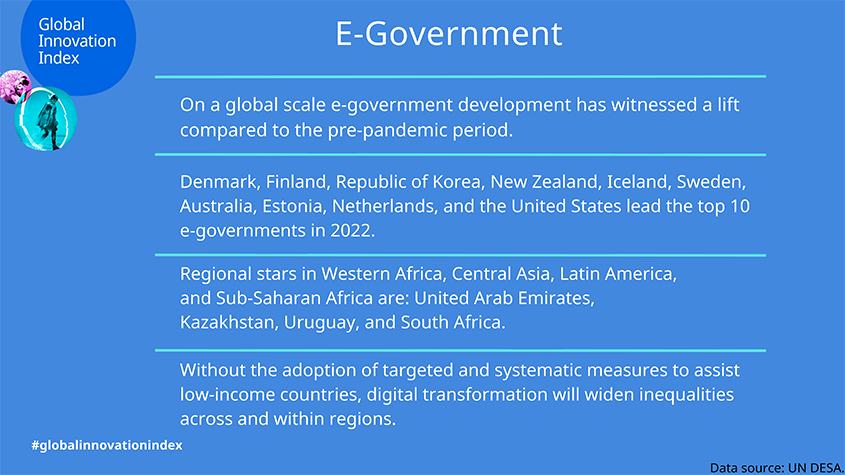
The WIPO Global Innovation Index uses e-government data by the United Nation Department of Economic and Social Affairs to assess the innovation performance of economies – and in this case governments – in the field of information technology uptake and impact.
The COVID-19 pandemic has highlighted the importance of e-government initiatives, as governments have had to rapidly adapt to new ways of delivering services to citizens. There are several global trends and challenges that governments need to address if they are to successfully navigate the digital age:
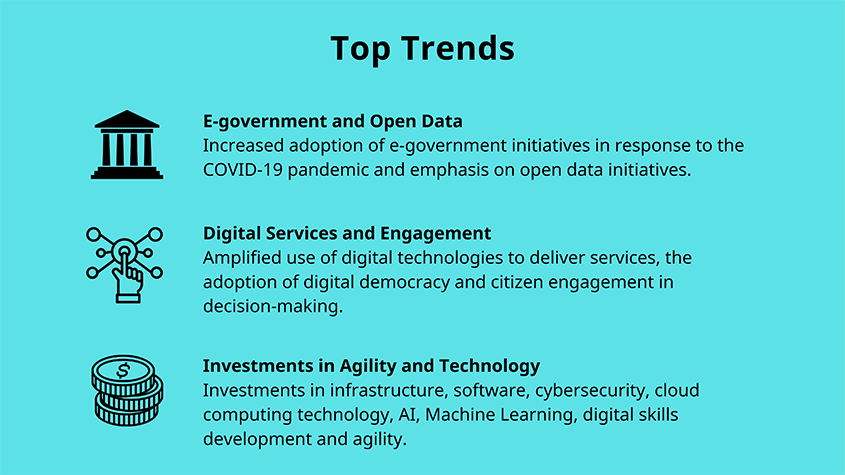
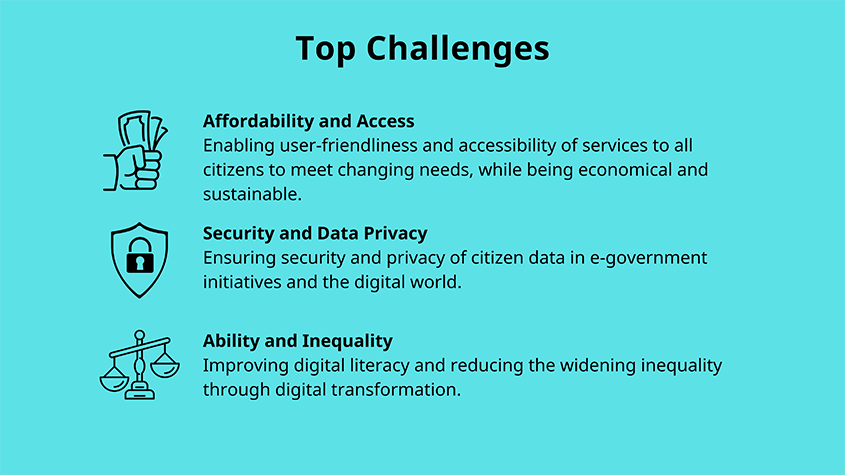
Denmark, Finland, the Republic of Korea, New Zealand and Iceland lead on e-government
Denmark, Finland, Republic of Korea, New Zealand, Iceland, Sweden, Australia, Estonia, Netherlands, and the United States lead the top 10 on e-government in 2022 according to data from the UN E-government Survey used in the GII. These top players in e-government share several common factors for success. These include a commitment to digital innovation with a clear plan for achieving digital maturity across government agencies and stakeholders, a focus on accessibility and inclusivity, citizen engagement and service delivery (e.g. digital ID, digital mailbox, online tax services, etc.), and an emphasis on cybersecurity and data privacy. In addition, a culture of collaboration and knowledge-sharing between government agencies and stakeholders helps to continuously achieve improvements in e-government.
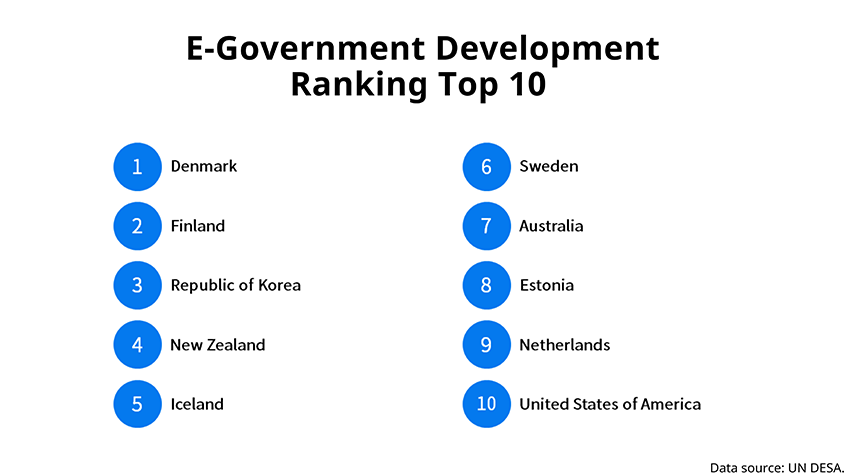

Meet the Top Regional Winners in the E-government Development Ranking
In line with the Global Innovation Index (GII) country categorization[1] the below infographic shows a mapping of the top regional e-government winners. Outside of North America and Europe, the top three regions are Western Africa, Central Asia, and Latin America, specifically countries such as UAE (rank 13 out of 193 countries), Israel (rank 16), Kazakhstan (rank 28), Uruguay (rank 35), and Chile (rank 36) have performed well. In Sub-Saharan Africa, South Africa (rank 65) leads.
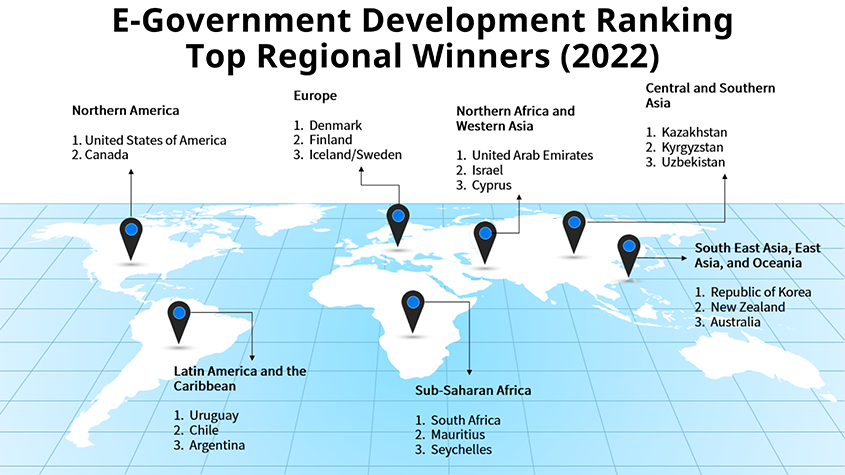
E-government has Received a Lift from the Pandemic Standstill, but the Global Progress is Uneven, both Across Regions and In-between Regions: High-income Countries are at the Forefront, the Sub-Saharan Africa Region Still Lags Behind
E-government development has seen global improvements from 2018 to 2022, especially comparing data before the pandemic and through to today. Nevertheless, comprehensive digital transformation in the public sector has not yet been fully realized, most progress in the last years has been centered on service delivery during the COVID-19 pandemic, but predominantly focused on health, education and social protection services instead of modernizing wider IT architectures and addressing the lack of connectivity.
Furthermore, as evidenced by the rankings, there are stark differences i) across regions and ii) in-between the regions. Looking deeper into the in-between regional differences, such as in the Central and Southern Asia Region, we have some strong leaders, where governments have demonstrated clear political will and investments, such as Kazakhstan, but also other countries such as Afghanistan and Pakistan at the lower end.
From 48 countries in the Sub-Saharan Africa Region, a great majority (44 countries) rank low, between 106 and 193. The exceptions are South Africa (rank 65), Mauritius (rank 75) and Seychelles (rank 85). The latter two have been able to achieve higher rankings due to their unique advantages as small island states with stable political environments, which have allowed them to invest in e-government initiatives.
The challenges of affordability, access, and ability (e.g. digital literacy) remain. Without the adoption of targeted and systematic measures to assist low-income and lower-middle-income countries, digital transformation will widen inequalities across and within countries (rural-urban disparities) and regions. To ensure that the "no one is left behind" agenda is successful, it is important to consider how we can use data, design, and delivery. This includes collecting data that is informed by the needs of vulnerable groups, involving people in the design process, and using innovative approaches to ensure that those left furthest behind are reached. These approaches should be context-tailored to each group and evaluated regularly for their effectiveness.
Background
The Global Innovation Index includes a pillar on Infrastructure, with one subpillar on Information and communication techonlogies and two indicators on 3.1.3 Governents’ online service and 3.1.4 E-participation. This data is obtained from United Nations E-government Survey produced by the Division for Public Institutions and Digital Government (formerly the Division for Public Administration and Development Management), United Nations Department of Economic and Social Affairs (UN DESA), E-government Survey 2022. Download the E-government data set.